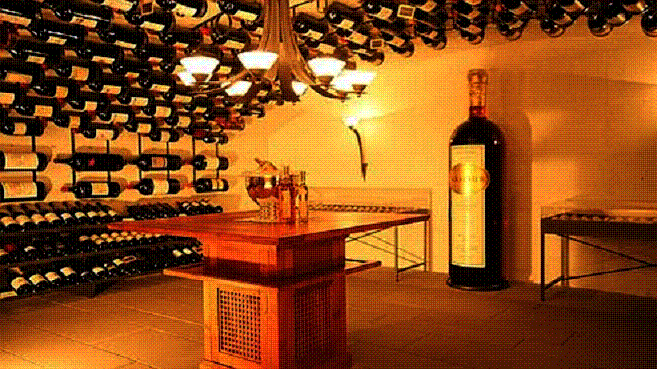- Winery Lovers

- May 5, 2023
The most passionate connoisseurs love to offer their favourite wines in large formats that enhance the nectars served. If everyone knows the magnum, the other “large” bottles sometimes have somewhat complicated names. Let's try to decipher these different names and their sometimes mysterious origin.
Magnum containing 1.5 litres or two 75 cl bottles.
It originates from the Latin word "magnum" which means "large".
It would be known since the end of the 18th century.
Jeroboam containing 3 litres or 4 bottles of 75 cl.
According to biblical history, Jeroboam I (931 – 909 BC) was the first king of the northern part of Israel. He received the crown from the hands of the ten tribes who had risen against Rehoboam, son of Solomon. Jeroboam II (743 – 746 BC), son of Joash, was also king and extended his power over all the lost provinces, with the exception of the kingdom of Judas.
Rehoboam containing 4.5 litres or six 75 cl bottles.
Son of King Solomon, his tyrannical government brought him the wrath of ten of the twelve tribes of Israel who preferred Jeroboam to him. He himself retained the territories of Benjamin and Judas.
Methuselah containing 6 litres or eight 75 cl bottles.
The name of the patriarch - the oldest person mentioned in the Old Testament - has become synonymous with longevity. According to Genesis, this son of Enoch would have lived 969 years and would have perished during the Flood.
Salmanazar containing 9 litres or 12 bottles of 75 cl.
This surname was borne by five Assyrian kings. Shalmaneser I ruled Assyria between 1275 and 1245 BCE. Shalmaneser III was the son of Ashurbanipal and was a great conqueror. Shalmaneser V reigned from 727 to 722 BC. AD and invaded Palestine. There he defeated the ruler of Israel, Hosea, then besieged Tire and Samaria until his death.
Balthazar containing 12 litres or 16 bottles of 75 cl.
Balthazar was one of the Three Magi who came to pay homage to the Child Jesus. In traditional iconography, he represents Africa. A second biblical Balthazar exists and could have given his name to the bottle. This is the last king of Babylon, killed when the city was taken by Cyrus in 539 BC. J.-C.
Nebuchadnezzar containing 15 litres or 20 bottles of 75 cl.
He was the greatest king of Babylon and ruled between 605 and 562 BC. After defeating the Egyptians, he conquered Jerusalem several times and took the Hebrews captive to Babylon, which he made into a magnificent city.
Salomon containing 18 litres or 24 bottles of 75 cl.
He is sometimes called Melchior, from the name of the mage king supposed to come from Europe. The Solomon of the Old Testament was king of Israel between 970 and 931 BC. Endowed with many gifts, such as wisdom or the knowledge of languages, he was the subject of several books of the Bible. His wealth, his harem and his affair with the Queen of Sheba also reached legendary dimensions.
Sovereign containing 26.25 litres or 35 bottles of 75 cl.
The Sovereign was designed by Taittinger for the christening of the world's largest liner "Sovereign of the Sea", on January 16, 1988.
Primat containing 27 litres, i.e. 36 bottles of 75 cl.
This name comes from Low Latin and means “of the first order”. Historically, it is a name given to a few archbishops who, by ancient rights, have a sort of superiority over all the bishops and archbishops of a region.
It was reportedly first used in 1999 for what was then the biggest bottle ever produced.
Melchizedec containing 30 litres, i.e. 40 bottles of 75 cl, used since 2002.
This giant basin bears the name of an enigmatic character from Sacred History. Melchizedek blessed Abraham and possesses a messianic character similar to that of Christ.
WORLD RECORD HOLDER
The bottle holding the world record exists in a single copy. For its manufacture, many explanations and precise calculations were necessary.
This giant bottle sits in a Swiss restaurant.
Imagined by restaurateur Emil Migg, the largest bottle of wine in the world (a sweet white from Austrian Burgenland vintage 2005 in this bottle made in Germany) was presented in November 2007 in Rehetobel (Appenzell – Switzerland), at the Gasthaus zum Gupf.
This one has dream measurements for wine lovers: 2.4 meters high for a diameter of 68 centimetres.
It weighs 630 kilograms, the equivalent of a young ox.
This bottle contains no less than 480 litres of wine.
It could contain the equivalent of 640 normal 75 cl bottles
As for the cork, it measures 18 centimetres, with an average cork usually measuring 2.4 centimetres.
A record that will be entered in the Guinness Book. The previous record belonged to a bottle measuring 1.37 meters with a capacity of 130 litres. A little girl in comparison.










